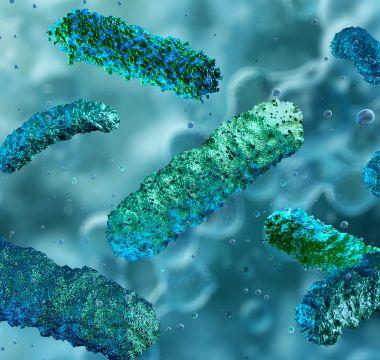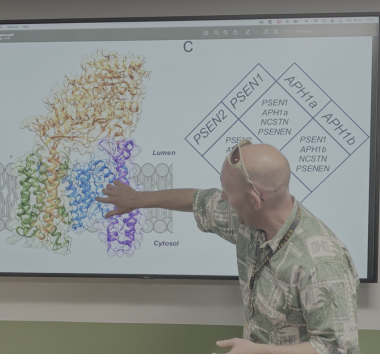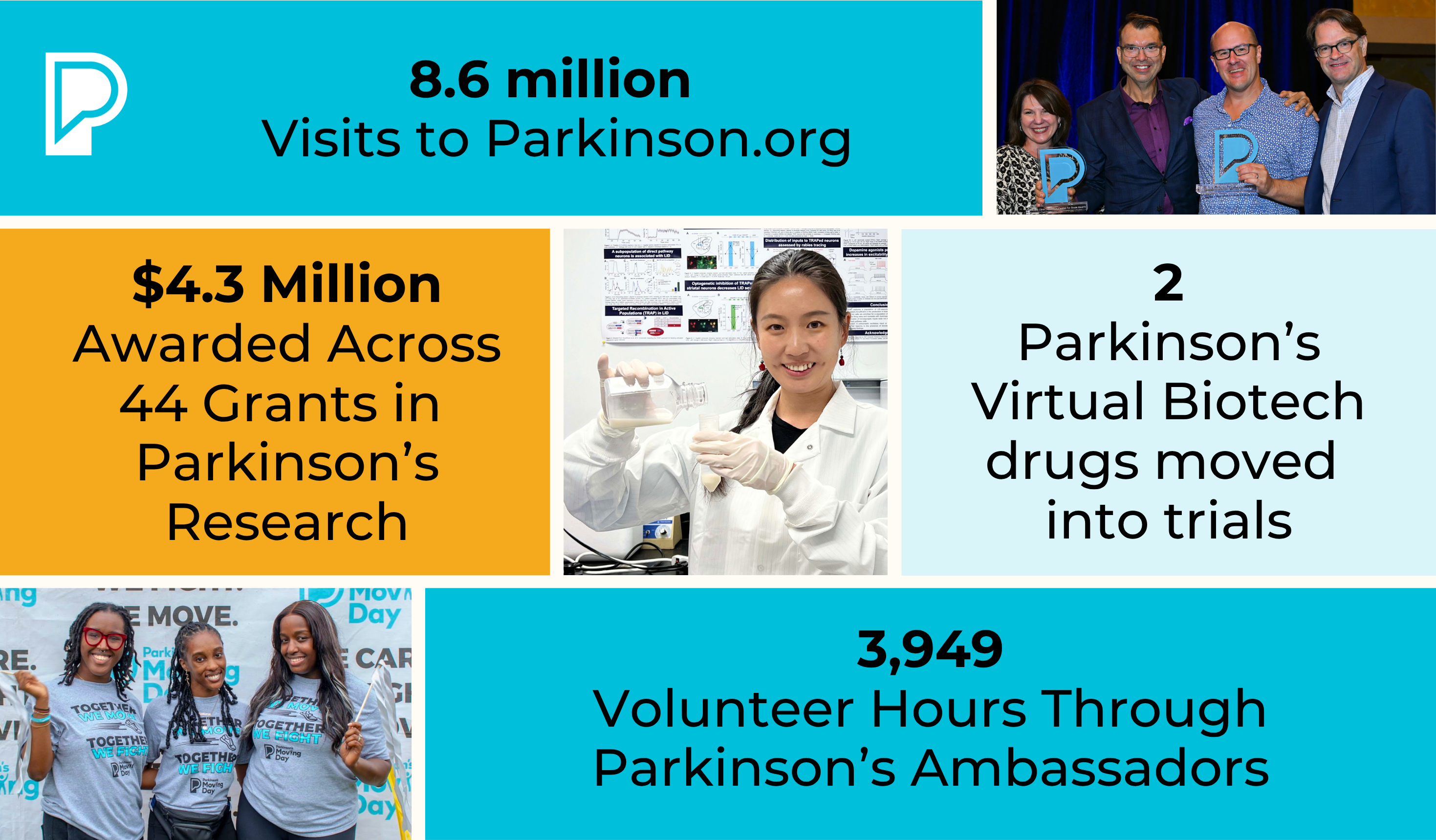Top Parkinson’s Science News Articles of 2025
🧠 What will you learn in this article?
This article highlights our top eight Science News articles, which highlight some of the most impactful Parkinson’s studies of the year. It discusses:
- Studies that made headlines including the relationship between golf courses and Parkinson’s risk.
- Studies that cover hospital safety, GLP1’s and brain inflammation.
- What these studies mean for people living with the disease.

Even though Parkinson’s disease (PD) is the fastest-growing neurological condition in the U.S. and globally, it remains an underfunded field of research. However, every day, scientists are dedicated to unraveling how Parkinson’s works so that we can have new treatments and ultimately, a cure. Through funding research year-round, we know a breakthrough in Parkinson’s research can happen in any lab, from any researcher.
As one of our most popular blog article series, our Science News articles highlight some of the most impactful Parkinson’s studies and what they mean for people living with the disease. Explore our top Science News articles of 2025 below to learn more about the latest advances in PD research.
1. Update: New Study Finds Drugs like Ozempic Ineffective for Parkinson’s Treatment

A Lancet study found that the diabetes drug exenatide, a GLP-1 receptor agonist, did not improve Parkinson’s symptoms compared to a placebo over two years. Researchers also found no changes in dopamine activity in the brain, suggesting that current GLP-1 drugs are not effective as Parkinson’s treatments.
2. Golf Course Pesticides, Drinking Water & Parkinson’s Risk

Living near golf courses may increase the risk of developing Parkinson’s, according to a new study using 25 years of medical data from southeastern Minnesota. Researchers found that people who lived within one mile of a golf course were more than twice as likely to be diagnosed with PD compared to those living six or more miles away.
These findings suggest that pesticides and herbicides used on golf courses could leach into drinking water and contribute to Parkinson’s risk. This study highlights how environmental exposures may play a role in PD. Understanding these risks could help individuals and regulators take steps to reduce exposure and protect brain health.
3. Two New Trials Explore Stem-Cell Therapy for Parkinson’s

Two new studies suggest that stem cell-based therapies may safely boost dopamine production in people with Parkinson’s. Researchers in Japan, the U.S., and Canada transplanted early-stage dopamine-producing cells — derived from induced pluripotent (iPS) and human embryonic stem (hES) cells — into the brains of 19 participants. After up to two years, no serious side effects or tumors were reported, and brain scans showed increased dopamine activity. Many also showed improvements in movement symptoms.
While these early results don’t prove stem cell therapy can reverse Parkinson’s, they highlight a safe and promising new direction for developing future PD treatments.
4. Study Finds Potential Link Between Parkinson's and Gut Health

People with inflammatory bowel disease (IBD) have a higher risk of developing Parkinson’s, but the reason why has remained unclear. A new study compared the gut microbiomes of people with Parkinson’s, IBD, and healthy individuals, revealing striking similarities between the first two groups. Both showed reduced levels of certain bacteria that produce short-chain fatty acids (SCFAs), which are important for gut and brain health.
These findings suggest that the loss of SCFA-producing bacteria may link IBD and Parkinson’s by disrupting gut and brain communication, known as the gut-brain axis. This could make some people with IBD more susceptible to developing Parkinson’s later in life.
5. Study Shows Multiple Sleep Problems Are Common in Early Parkinson’s

Sleep problems are common even in the early stages of Parkinson’s. Among 162 people recently diagnosed with PD, 71% experienced at least one sleep disorder, and nearly half had more than one. The most frequent issues included insomnia (41%), REM sleep behavior disorder and excessive daytime sleepiness (each 25%), as well as restless legs syndrome (16%).
Researchers found that these sleep problems were more strongly linked to physical changes caused by PD than to emotional factors like anxiety or depression. The findings suggest that sleep disturbances may appear early in the disease and have a major impact on quality of life.
6. Brain Inflammation Linked to Dementia Risk in Parkinson’s
Parkinson’s can lead to dementia, affecting nearly half of people within 10 years of diagnosis. A new study explored early brain changes to understand why some people develop dementia while others don’t, focusing on two factors: brain inflammation and buildup of the protein tau.
Researchers found that people with Parkinson’s who were at higher risk for dementia showed more brain inflammation and performed worse on cognitive tests. These results suggest that brain inflammation may be an early driver of cognitive decline in Parkinson’s and could help identify those at greater risk.
7. Mainstay Parkinson's Medication Sometimes "Wears Off" Faster for Women

Levodopa is a key treatment for the movement symptoms of Parkinson’s, but its effectiveness can diminish over time, a phenomenon known as “wearing off.” A study found that nearly 65% of women had symptom fluctuations between doses, compared to about 53% of men. Women were also more likely to develop dyskinesia (involuntary movements caused by levodopa).
The study concluded that female gender was the strongest predictor of wearing-off effects and dyskinesia. These findings highlight that men and women may respond differently to levodopa, suggesting the need for more personalized, gender-informed treatment plans for people with Parkinson’s.
8. Study Shows Staying Active in the Hospital Benefits People with Parkinson’s
Order a Parkinson’s Hospital Safety Guide
This guide is filled with useful tools and information to help you prepare for and navigate a hospital stay.
People with Parkinson’s are more likely to be hospitalized, face complications and experience longer stays than those without PD. A new study shows that staying active during a hospital stay — moving safely in and out of bed at least three times a day — can greatly improve outcomes for patients with PD.
The study found that hospitalized patients with PD who stayed active had shorter stays, were more likely to be discharged home rather than to a care facility and had lower odds of dying within 30 to 90 days after release. These results highlight the importance of inpatient mobility programs and support the Parkinson’s Foundation’s recommendations for regular movement during hospitalizations to help improve recovery.
9. Study Links Air Pollution to Lew Body Dementia Risk

A study of 56.5 million Americans found that living in areas with higher air pollution may increase the risk of developing Lewy body dementia (LBD) — a finding with significant implications for the Parkinson's disease (PD) community, as approximately 70% of people with Parkinson's eventually develop LBD. Researchers linked long-term exposure to fine particulate matter (PM2.5) — tiny particles from vehicle exhaust, industrial emissions, and wildfire smoke — to higher rates of LBD hospitalizations.
The findings suggest air pollution may trigger harmful brain changes similar to those seen in human LBD, highlighting the need for cleaner air and stronger environmental protections to support brain health.
Ready to participate in Parkinson’s research?
Visit our Join A Study page to learn more































